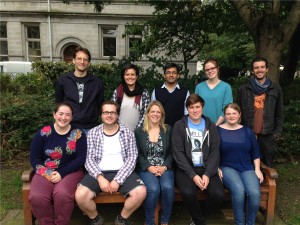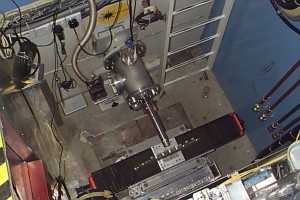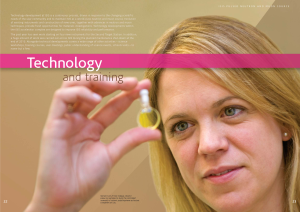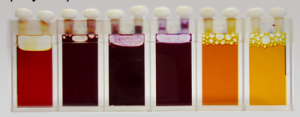Title of Research Group: Materials and Device Photochemistry Group
Principal Investigator: Dr Rachel C. Evans
Institution: Trinity College Dublin
School: School of Chemistry
Research: Our research investigates the structural and optoelectronic properties of solution-processable hybrid materials, which find application in solar energy conversion, optical sensing and light-emitting device technologies. Hybrid materials are composites consisting of two constituents, typically one organic and one inorganic, intimately mixed at the nanometre level. Device performance depends critically on the electronic properties and nanoscale morphology of its components, yet their interplay is still poorly understood. Our goal is to elucidate the fundamental relationship between molecular structure, organisation and the physical properties of hybrid materials and in doing so understand how these parameters can be tailored and controlled to produce efficient devices. Small-angle neutron/x-ray scattering experiments allow us to probe the microstructural organisation of hybrid materials (solutions, gels, films) from the near atomic (~5 nm) to near micron (~600 nm) scale. This provides complementary information to that obtained from in-house techniques (e.g. spectroscopy, light scattering) and enables us to correlate the microstructural organisation to the macroscale properties.
Techniques: SANS/SAXS
Facilities: ISIS, MaxIV
Beamlines: Loq, SANS2D
Group (as of 2014): 6 Ph.D. and 2 PD
Participating group members at SR/FEL/neutron facilities (period 2008-2014):
2 Ph.D and P.I.
Impact: The group was established in 2011. Access to neutron facilities enabled us to rapidly develop an independent research programme and obtain proof of concept data that lead to a successful application for research funding from Science Foundation Ireland.
Quote: “Access to neutron facilities has not only broadened my scientific skills, but has enabled me, in combination with complimentary techniques, to confidently characterise novel materials on the nanoscale, critical to the success of my Ph.D.”- Judith Houston
Publication Highlights:
All-Conjugated Cationic Copolythiophene “Rod-Rod” Block Copolyelectrolytes: Synthesis, Optical Properties and Solvent-Dependent Assembly, A. Thomas, J. E. Houston, N. Van den Brande, J. De Winter, M. Chevrier, R. K. Heenan, A. Terry, S. Richeter, A. Mehdi, B. Van Mele, P. Dubois, R. Lazzaroni, P. Gerbaux, R. C. Evans* and S. Clément*, Polymer Chemistry, 2014, 5, 3352-3362. DOI: 10.1039/C4PY00037D.
Cationic Polythiophene-Surfactant Self-Assembly Complexes: Phase Transitions, Optical Response, and Sensing. R. C. Evans*, M. Knaapila, N. Willis-Fox, M. Kraft, A. Terry, H. D. Burrows, U. Scherf, Langmuir, 2012, 28, 12348-12356. DOI: 10.1021/la302166a
Solvent dependent assembly of a polyfluorene―polythiophene “rod-rod” block copolyelectrolyte: Influence on photophysical properties. M. Knaapila, R. C. Evans, A. Gutacker, V. M. Garamus, M. Torkkeli, M. Forster, U. Scherf, H. D. Burrows, Langmuir, 2010, 26, 5056. DOI: 10.1021/la903520w.
Website: – Group Website





